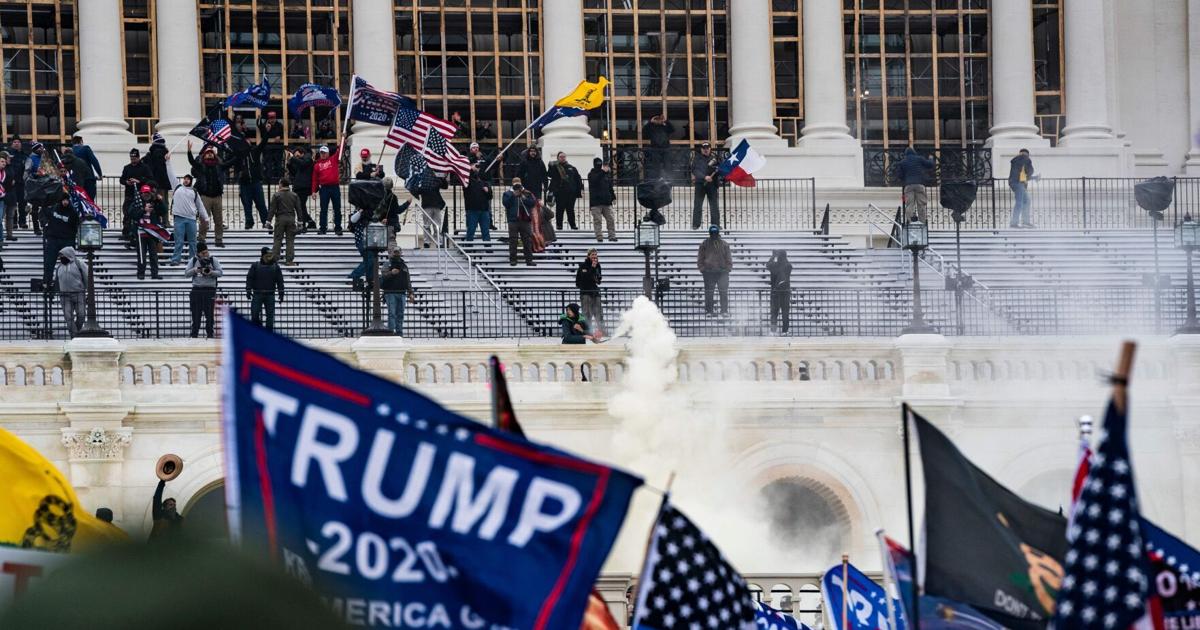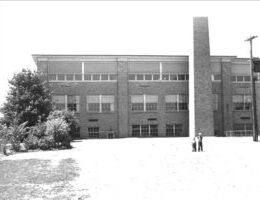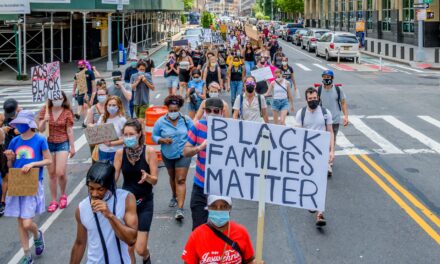
{ if(window.Osano?.cm?.getConsent().ANALYTICS === ‘ACCEPT’){ if (window.TRINITY_PLAYER && TRINITY_PLAYER.players[‘article-body-5eeb9b5e-6b05-11ef-9443-cb632e00289c’]) { TRINITY_PLAYER.api.createPlayer(‘article-body-5eeb9b5e-6b05-11ef-9443-cb632e00289c’); } else { let id = ‘2900013015’; if(__tnt?.ads?.dfp?.af || window.Osano?.cm?.getConsent().MARKETING != ‘ACCEPT’) id = ‘2900017379’; const text = encodeURIComponent(btoa(‘#article-body’)); var js = document.createElement(‘script’); js.setAttribute(‘data-player-id’, ‘article-body-5eeb9b5e-6b05-11ef-9443-cb632e00289c’); js.src = `https://trinitymedia.ai/player/trinity/${id}/?pageURL=https://richmond.com/news/state-regional/crime-courts/us-capitol-rocky-mount-police-sgt-thomas-robertson/article_5eeb9b5e-6b05-11ef-9443-cb632e00289c.htmlpoweredBy&partner=Flex&textSelector=${text}&FAB=1`; document.body.appendChild(js); } } else { document.getElementById(‘lee-trinity-player’).style.display=’none’; } })(); ]]>
WASHINGTON — A former Virginia police officer who stormed the U.S. Capitol received a reduced prison sentence of six years on Wednesday, making him one of the first beneficiaries of a recent U.S. Supreme Court ruling that limited the government’s use of a federal obstruction law.
More than two years ago, former Rocky Mount police Sgt. Thomas Robertson originally was sentenced to seven years and three months of imprisonment for joining a mob’s Jan. 6, 2021, attack on the Capitol.
Former Rocky Mount police officer Thomas “T.J.” Robertson, center, is seen entering the U.S. Capitol on Jan. 6, 2021, in an image captured by a surveillance camera. The yellow arrow was added when the image was entered into evidence in his trial.
U.S. District Court of the District of Columbia
Prosecutors urged U.S. District Judge Christopher Cooper to preserve the original sentence, but the judge imposed the shorter prison term Wednesday after agreeing to dismiss Robertson’s conviction for obstructing the congressional certification of President Joe Biden’s 2020 electoral victory.
People are also reading…
Robertson was the first Capitol riot defendant to be resentenced after the dismissal of a conviction for the obstruction charge at the center of the Supreme Court’s ruling in June, according to Justice Department prosecutors. The high court ruled 6-3 that a charge of obstructing an official proceeding must include proof that a defendant tried to tamper with or destroy documents — a distinction that applies to few Jan. 6 criminal cases.
“I assume I won’t be seeing you a third time,” the judge told Robertson at the end of his second sentencing hearing.
Robertson, who declined to address the court at his first sentencing hearing, told the judge on Wednesday that he looks forward to returning home and rebuilding his life after prison.
“I realize the positions that I was taking on that day were wrong,” he said of Jan. 6. “I’m standing before you very sorry for what occurred on that day.”
A jury convicted Robertson of all six counts in his indictment, including charges that he interfered with police officers during a civil disorder and that he entered a restricted area with a dangerous weapon, a large wooden stick. Robertson’s jury trial was the second among hundreds of Capitol riot cases.
Robertson traveled to Washington on that morning with another off-duty Rocky Mount police officer, Jacob Fracker, and a third man, a neighbor who wasn’t charged in the case.
Fracker, who pleaded guilty to a conspiracy charge and agreed to cooperate with the government, was sentenced in 2022 to probation and two months of home detention.
For 20 years, the David D. Lindsay Foundation has provided scholarships for Richmond Public High School students.
Jurors who convicted Robertson saw some of his posts on social media before and after the riot. In a Facebook post on Nov. 7, 2020, Robertson said “being disenfranchised by fraud is my hard line.”
“I’ve spent most of my adult life fighting a counter insurgency. (I’m) about to become part of one, and a very effective one,” he wrote.
After Jan. 6, Robertson told a friend that he was prepared to fight and die in a civil war and he clung to baseless conspiracy theories that the 2020 election was stolen from then-President Donald Trump.
“He’s calling for an open, armed rebellion. He’s prepared to start one,” Assistant U.S. Attorney Elizabeth Aloi told the judge.
Prosecutors said Robertson used his law enforcement and military training to block police officers who were trying to hold off the advancing mob.
Defense attorney Mark Rollins said Robertson made bad choices and engaged in bad behavior on Jan. 6 but wasn’t trying to “overthrow democracy” that day.
“What you find now is a broken man,” Rollins said.
The town fired Robertson and Fracker after the riot.
29 photos from the Times-Dispatch archives
This August 1941 image shows a woman working in a tobacco factory. An accompanying story outlined the growth of Virginia women in the workforce. Based on 1930 census data, more than 6,000 women worked in tobacco factories — the sixth-ranked source of employment for women.
In June 1972, the remnants of Hurricane Agnes brought some of the worst flooding in decades to Richmond. The James River crested at 36.5 feet at the city locks. This image taken along South Dock Street shows the Pleasure Island, a floating restaurant and one-time nightclub, wrecked near its dock. In 1950, the boat made headlines by anchoring in Maryland waters to escape Virginia regulations.
In May 1956, the Quantico Marine Base Band marched along Franklin Street in a parade to kick off Armed Forces Day festivities in Richmond. Armed Forces Day, celebrated on the third Saturday of May, was first observed in May 1950 after the military branches, which had separate celebration days, were consolidated under the Defense Department.
In June 1948, youngsters from the Belle Bryan Day Nursery enjoyed a picnic at Byrd Park in Richmond. The nursery was a Community Chest agency (now United Way).
In August 1963, protesters board a bus at the Leigh Street YMCA in Richmond for a trip to the U.S. Capitol to participate in the March on Washington for Jobs and Freedom. An estimated 2,500 Virginians were among the roughly 250,000 marchers at the protest, which called for civil rights legislation and featured the Rev. Martin Luther King Jr.’s “I Have a Dream” speech.
In July 1952, the nation’s first 24-hour peacetime air raid alert system, called Operation Skywatch, began operation. Air Force members and volunteers staffing the Richmond filter station began plotting sightings of planes as they were called in.
In November 1958, business was brisk at the Goldman Paper Stock Co. in Richmond as the price it was paying for scrap paper and cardboard had risen to levels not seen since the Korean War – 100 pounds of newsprint would net 75 cents, while a ton of paper was worth $16, up from $10 over the summer. Prices were expected to decline after Christmas.
In April 1956, renovations were giving new life to areas of the governor’s mansion complex in Richmond. This image shows the former kitchen and servants’ quarters, which had been converted to a guest house. High shrubs that had nearly covered the back were replaced with new landscaping.
In September 1960, new teacher Margaret Liebert surveyed the classroom she had carefully laid out for her first group of students at Tuckahoe Elementary School in Henrico County.
In March 1951, reigning horse of the year Hill Prince came home to The Meadow, near Doswell in Caroline County, after suffering a leg fracture during training in California. Trainer J.H. “Casey” Hayes delivered a pat to the Thoroughbred’s nose. Owned by Mr. and Mrs. Christopher T. Chenery, Hill Prince did not return to racing until fall 1951 and only raced one more year before being retired.
In September 1950, there were still working cart and wagon horses in Richmond, in addition to police horses that patrolled the streets. That month, city officials pondered whether furnishing water to this old horse trough – on North Second Street near Bates Street – and two others was still justified. The cost of supplying water to all three was about $500 per year.
In October 1980, Blevins Gibbs (front), Henry McClellan and Larry Daylight, all Native Americans from Oklahoma, visited the Kings Dominion theme park in Doswell as part of Buffalo Bill’s Wild West and Congress of Rough Riders of the World. The show, based out of California, traveled the world and featured as many as 80 performers, though only 11 were at the local stop. Its focus was on entertainment, but it also aimed for authenticity and education.
This June 1964 image shows the newly renovated Park Avenue Methodist Church. The building at Park and Allen avenues in Richmond housed Monument Methodist Church before a fire in 1950 caused extensive damage. The following year, that congregation was part of a merger that formed Reveille United Methodist. The Byrd Park Methodist congregation, later renamed to Park Avenue, moved into the structure in 1952. The building is now occupied by Community Church of God in Christ.
In December 1954, actor Paul Douglas was in Richmond to star in a stage production of “The Caine Mutiny Court-Martial,” and he renewed acquaintances — and shared family photographs — with local actress and singer Patsy Garrett, a friend from their days in radio. Douglas might be most known for the film “Angels in the Outfield”; Garrett was known for her roles in the “Benji” films and as the “Purina Cat Chow Lady” in TV commercials.
In May 1940, Mrs. St. George Bryan and Mrs. Lawrence Price helped pack more than 1,000 sweaters, socks, afghans and other items knitted by Richmond volunteers, which were being sent to the Red Cross “Mercy Ship” that sailed in June to deliver war relief to Europeans.
In October 1940, the dedication ceremony was held for Richmond’s new deepwater terminal. The USS O’Brien, a recently commissioned Navy destroyer, had docked at the terminal a day earlier for the occasion.
In March 1956, Richmond Virginians manager Eddie Lopat (left) watched players at the start of spring training in Haines City, Fla., for the International League team. About two dozen Vees were already on site, with the rest set to report the following day.
This June 1981 image shows the miniature community Safety Town, a project initiated by the Ginter Park Junior Women’s Club and located in the parking lot of Azalea Mall in Henrico County for nearly 20 years. Police officers instructed children ages 4 to 8 in traffic, bicycle, fire, play and stranger safety using a scaled-down city that included buildings, traffic lights, railroad tracks, crossing signals and miniature cars.
In November 1958, Irvin H. Davis and son Irvin Jr. delivered baskets of fresh vegetables to Bernice W. Moore, the dietician at Sheltering Arms Hospital in Richmond, as thanks for the care delivered to Irvin Jr. — he had suffered a fractured skull after a blow to the head from a baseball bat. Father and son returned to the hospital regularly with vegetables from what they designated as the “Sheltering Arms” row in their garden.
This September 1970 image shows the midway at the 62nd annual Southside Virginia Fair. Attendance at the weeklong event was running ahead of 1969’s record 160,000. But in 1977, officials announced that the Petersburg-based fair, Virginia’s second-largest, would cease operations after experiencing drops in attendance, livestock exhibitors and revenue.
In October 1966, the Warwick High School Grenadier Band from Newport News marched in City Stadium as part of the National Tobacco Festival parade. The festival ran in Richmond from 1949 to 1984 and was a top event in the city during its run. A predecessor festival was held in South Boston before World War II.
This March 1945 image shows workers at Tredegar Iron Works in Richmond. Tredegar opened in 1837 and was a major manufacturing center for the Confederacy during the Civil War. It survived the evacuation fire of 1865 and continued as a production facility through most of the 1950s, producing items for the Allied effort during World War II. Today the facility houses the American Civil War Center at Historic Tredegar.
In August 1952, commanding officer Col. Edwin W. Thompson addressed members of the Virginia National Guard’s 224th Antiaircraft Artillery Group at their Glen Allen Armory home base. It was one of the first Virginia units to be activated for regular Army duty during the Korean War.
In January 1952, Virginia Union University basketball teammates Andrew Rodez (from left), Herman Howard and Ricky Johnson rested during a practice before an upcoming game against North Carolina College. The Panthers were on an eight-game winning streak, but they lost 76-73 in overtime to NCC.
In January 1970, two senior members of the state Senate — Dr. J.D. Hagood of Halifax County (left) and M.M. Long of Wise County — greeted Richmond’s L. Douglas Wilder, the chamber’s newest member. Wilder, the first African-American in the Senate, had won a special election the month before to succeed J. Sargeant Reynolds, who was soon to be sworn in as lieutenant governor. Wilder later became the nation’s first African-American elected governor.
In October 1941, a review of 10,400 troops was conducted at Camp Lee after the Quartermaster Replacement Training Center completed a second 13-week training period. The review was the first official appearance of the 10th Quartermaster Training Regiment, which had just been activated that week, bringing the number of training regiments there to five as war preparations accelerated.
In June 1942, the fifth registration for the Selective Service, covering men ages 18-20, took place across the nation. Here, Walter Nelson (left), 18, and William Arnette, 20, arrived to register at Thomas Jefferson High School in Richmond. They were among an estimated 7,500 young Richmonders to be registered.
In May 1942, Reaville M. Brown, a government engineer from Savannah, Ga., presented his X card to E.D. Dover at Jim’s Service Station on East Grace Street in Richmond. That month, Richmond drivers were among many on the East Coast who got gasoline cards as part of World War II rationing. An X card allowed unlimited purchases and typically was available to physicians, public transportation drivers, clergy and government officials. For most car owners, their A card had limited units in 3-gallon increments.
In November 1953, Elmer Harper worked with mattress felt at the Zaban Mattress & Box Spring Co. The company’s retail store was at the intersection of Foushee and Cary streets in downtown Richmond. In June of that year, company owner Karl E. Zaban addressed City Council about police protection.
Times-Dispatch 0 Comments
Source



